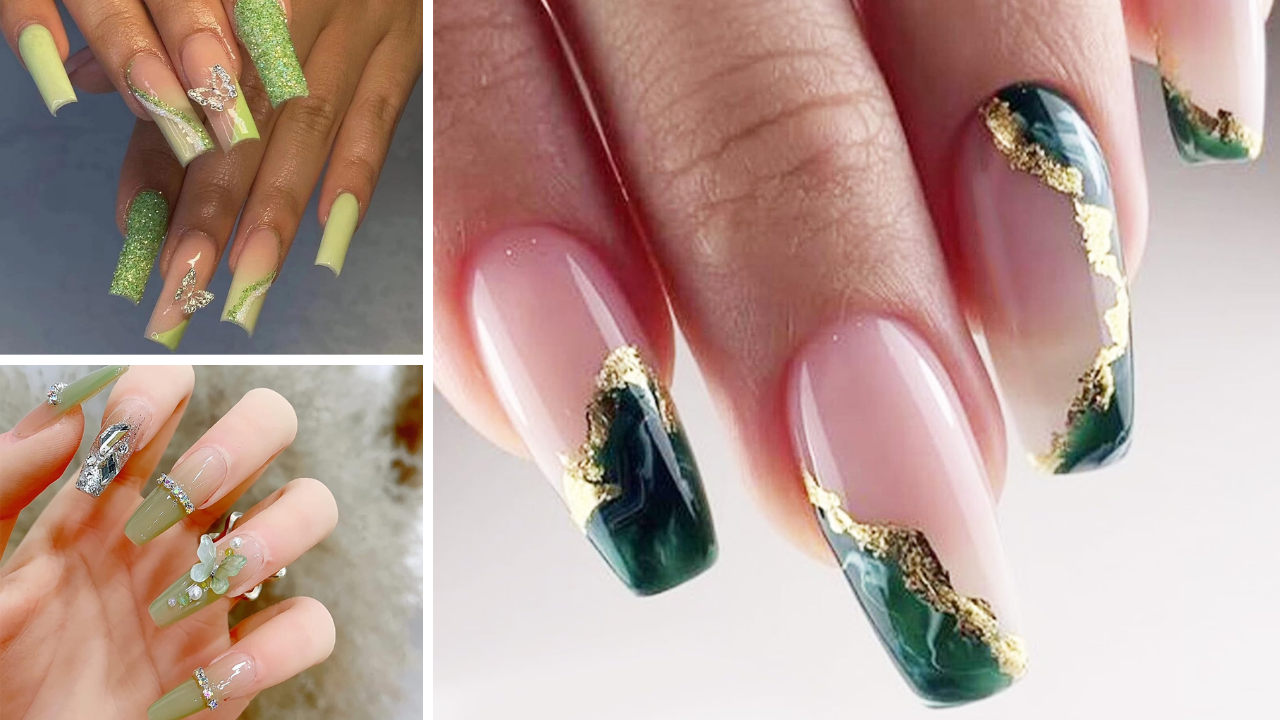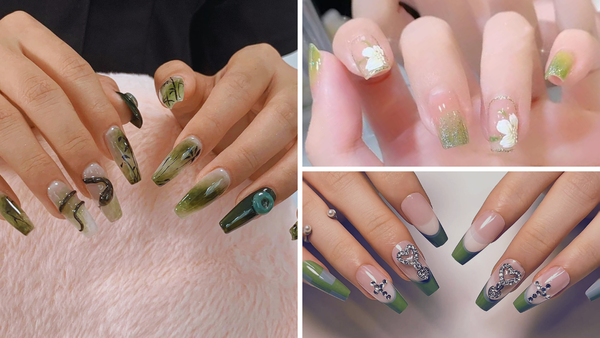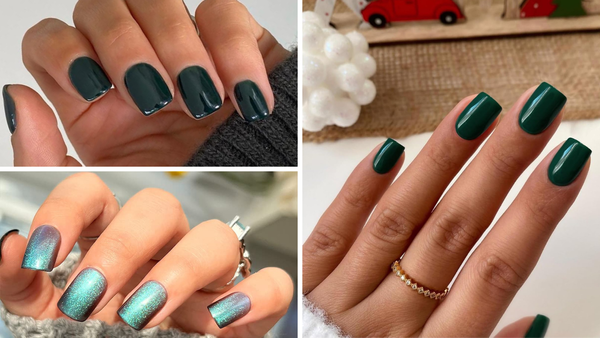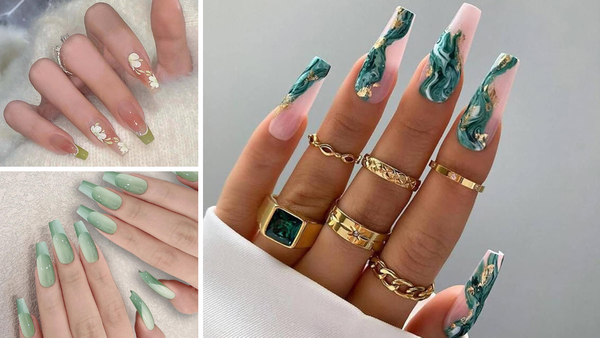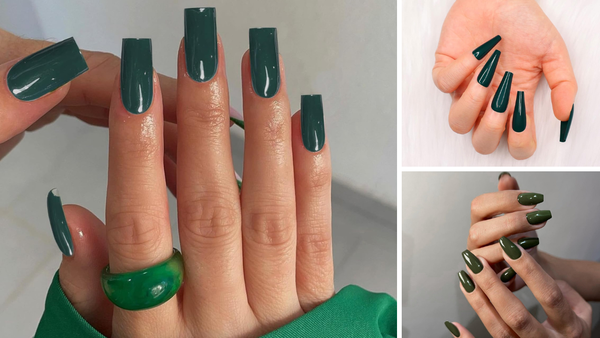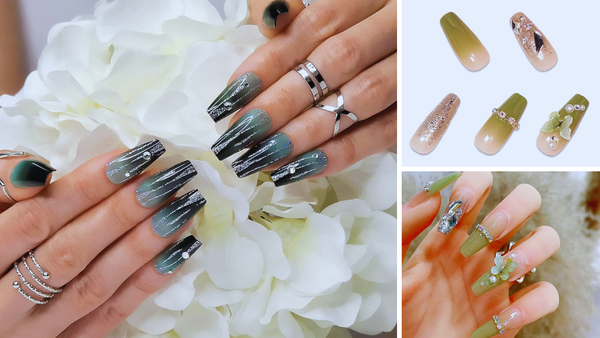Key Takeaways:
- Coffin nails, known for their tapered square shape and flat tip, offer a stylish yet functional design.
- The durability of coffin nails depends on material, length, and maintenance.
- Proper care and reinforcement can significantly enhance the strength of coffin nails.
Coffin nails, also called ballerina nails, have surged in popularity due to their unique shape, miming the look of a coffin or a ballerina's slipper. This nail shape is characterized by its long, tapered design with a squared-off tip, providing a striking platform for nail art. However, many enthusiasts often wonder: Do green coffin nails break easily?
Understanding Coffin Nail Structure
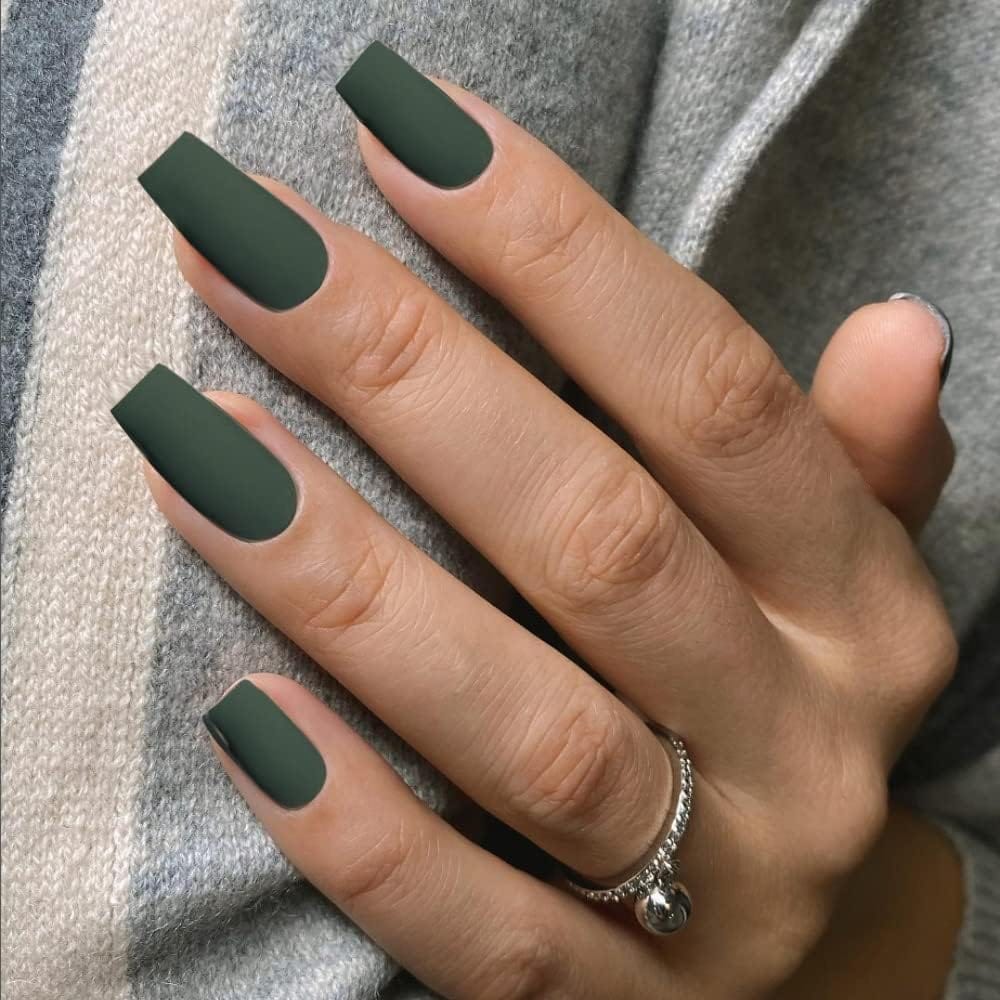
Coffin-shaped nails are celebrated for their edgy appearance and the wide canvas they offer for elaborate nail designs. Despite their bold look, their structure is crucial to their durability. The coffin shape is essentially a sturdier version of the stiletto shape, with the main difference being the broader, flat edge that helps distribute stress more evenly across the nail. This design detail makes them less prone to breaking than sharply pointed stiletto nails.
Material Matters: Acrylic vs. Natural
When discussing the resilience of coffin nails, distinguishing between acrylic and natural nails is vital. Acrylic nails, made from a mixture of liquid monomer and powder polymer that creates a hard protective layer over the natural nail, are more durable than natural nails. This is particularly beneficial for coffin nails, which may otherwise be more vulnerable to breakage due to their length and shape. While aesthetically pleasing, natural coffin nails require more maintenance to prevent breakage.
The Impact of Length on Durability
The length of the nail significantly influences its susceptibility to damage. Longer nails, while visually striking, can be more prone to breaking because they have more leverage to catch on objects and snap. Medium-length coffin nails are a practical compromise, offering the elegance of the shape with reduced risk.
Exploring the Durability of Different Nail Shapes
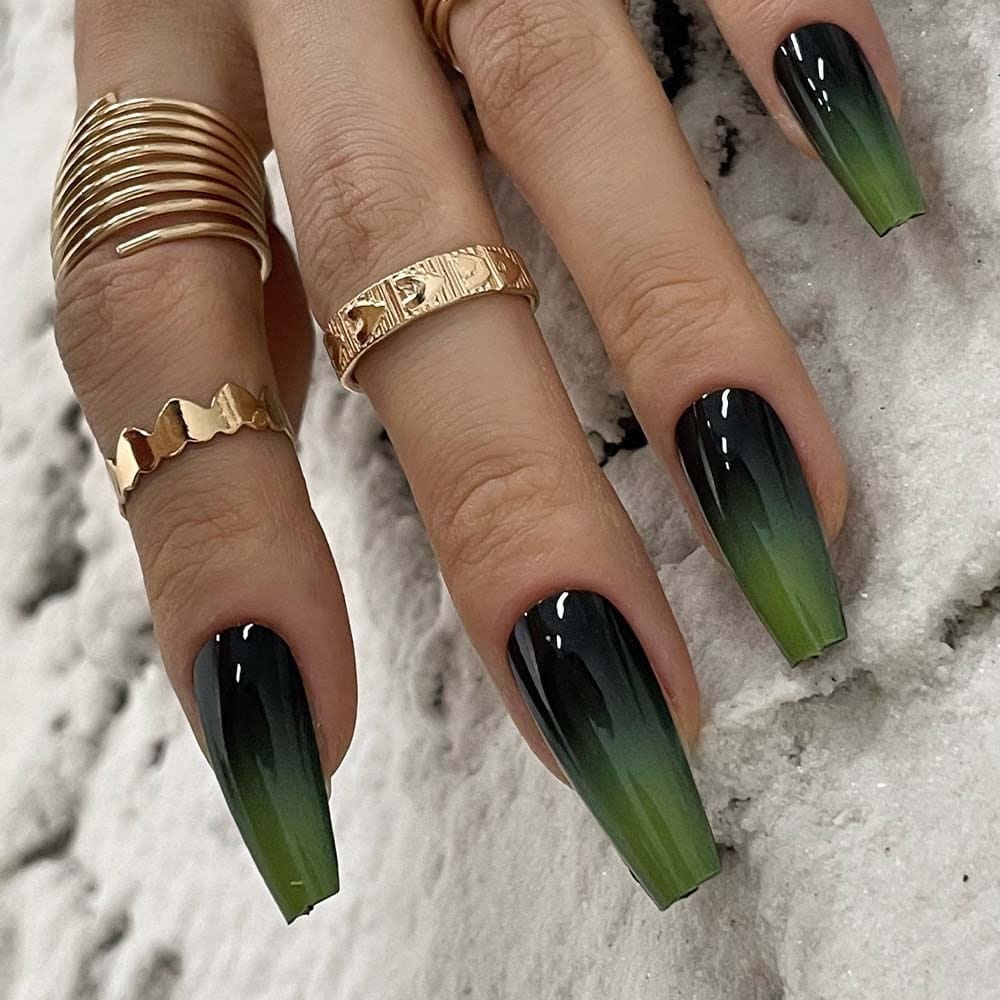
When pondering whether green coffin nails break easily, comparing them with popular nail shapes is crucial. Coffin nails, known for their tapered square shape with a flat tip, offer a stylish yet somewhat fragile option due to their length and corners. In contrast, oval nails, which feature a smoothly rounded tip that mimics the natural curvature of the nail bed, tend to withstand daily wear better. This resilience stems from the lack of sharp corners, which typically catch and lead to breaks in more angular designs like squares or stiletto shapes.
On the other hand, almond nails, with their slightly curved sides and pointed tips, strike a balance between fashion and function. These nails are less likely to snag than stiletto nails but offer more length and aesthetic appeal than round nails. For those with active lifestyles or weaker nails, opting for a squoval shape—a hybrid of the square and oval—might be the golden ticket. This shape maintains the chic appearance of square tips but rounds off the edges to prevent easy chipping, making it a durable and stylish choice for everyday wear.
The Evolution of Nail Shapes: From Almond to Stiletto
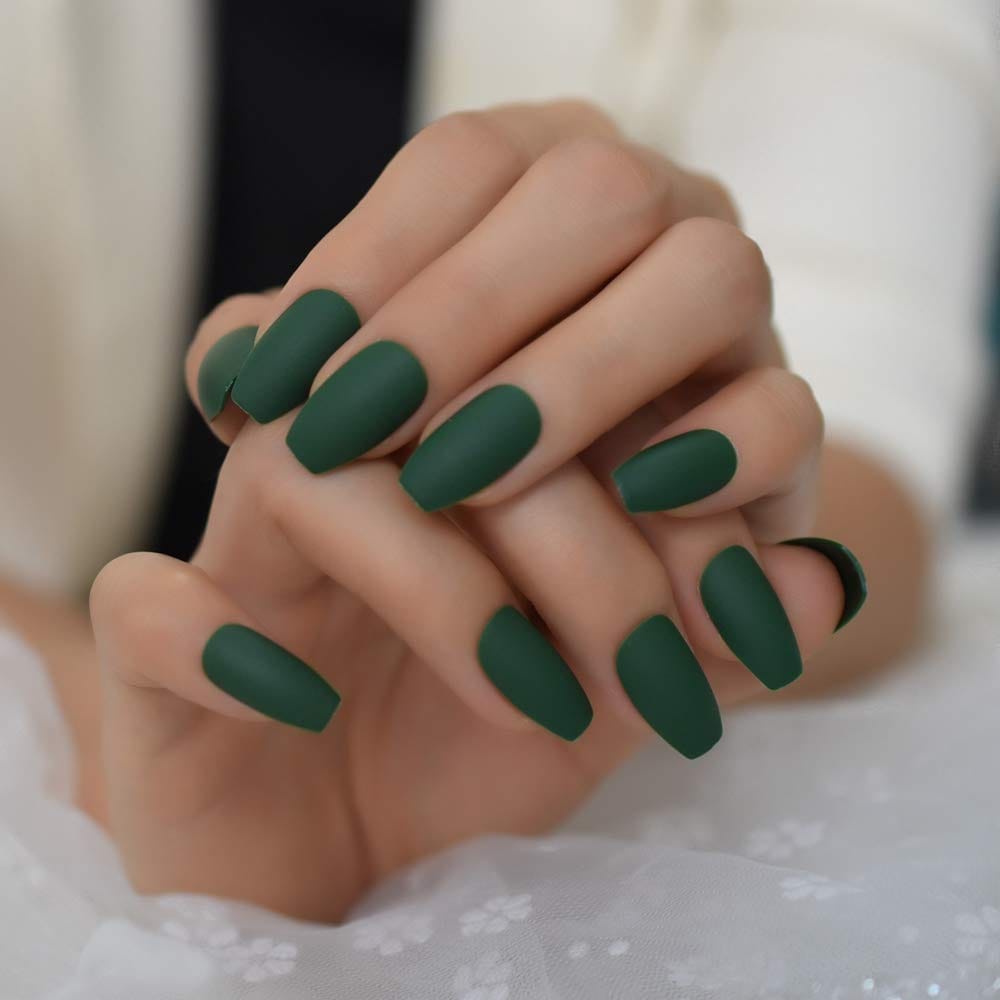
When tracing the lineage of nail fashion, it's clear that each shape tells a story. Almond nails, with their elegant, slightly curved taper that ends in a rounded point, offer a touch of sophistication and are often chosen by those who prefer a feminine yet practical aesthetic. On the flip side, stiletto nails, known for their dramatic, pointed tip, scream boldness and daring. These shapes are not just about aesthetics; they also reflect the wearer's personality and lifestyle choices. Whether opting for the understated elegance of almond nails or the bold statement of stilettos, the choice of nail shape can significantly influence the overall look and feel of one’s hands.
The diversity in nail shapes allows for a personalized approach to beauty that can complement natural nail characteristics and finger shapes. For instance, individuals with longer fingers might gravitate towards the stiletto shape to accentuate the length of their fingers. In comparison, those with shorter fingers might prefer the softening effect of almond-shaped nails. This customization goes beyond mere fashion; it creates harmony between one’s natural features and aesthetic preferences. As nail trends continue to evolve, choosing a shape that looks good and feels right remains paramount, making the nail salon almost a consultant space for beauty and comfort.
Nail Trends and Their Cultural Impact

Nail art has transcended simple color applications, becoming a platform for self-expression and cultural commentary. Celebrity manicurists often lead the charge, introducing intricate designs that quickly become popular nail shapes and styles. These trends are not just about looking good; they reflect broader societal trends or movements. For example, adopting bright, bold colors and complex designs can signify a collective mood of optimism or rebellion. Conversely, a trend towards natural nails or softer shapes like the oval nail shape might indicate a shift towards minimalism and sustainability in beauty standards.
Moreover, nail trends' influence extends beyond the individual to the wider community. In many ways, nail salons are informal social hubs where trends are discussed and ideas exchanged, making them pivotal in shaping local and global beauty standards. This communal aspect of nail culture helps spread new styles and shapes and creates a shared sense of identity and belonging among enthusiasts. Understanding nail trends' cultural significance can provide deeper insights into the dynamic interplay between individual identity and collective cultural expression.
Nail Length and Lifestyle: Finding Your Perfect Match
Choosing the right nail length is as crucial as selecting the shape. Long nails, such as the ballerina or coffin shape, can be glamorous and are often seen gracing the hands of celebrities. However, they require a significant amount of maintenance to prevent breakage. For those leading a low-maintenance lifestyle or those who work in hands-on professions, shorter nails might be the way to go. Short nails are not only less likely to break, but they also allow for more natural and healthy nail growth.
Conversely, medium-length nails offer a balance between functionality and fashion. They provide enough room for engaging nail art without significantly hindering daily tasks. For example, an oval nail shape at medium length can enhance the nail's natural shape while still being practical for typing and other finger-intensive activities. Ultimately, your best nail shape and length will depend on your daily activities, personal style, and the natural characteristics of your nail beds and fingers.
Nail Shape Suitability Based on Finger and Nail Bed Characteristics
Choosing the right nail shape goes beyond mere aesthetic preference; it's about harmony between the shape and the natural characteristics of your fingers and nail beds. For instance, individuals with wide nail beds may find square or squoval nails more flattering as these shapes help balance the width of the nails. Conversely, those with narrow nail beds might prefer the elongating effect of oval or almond shapes, which help create the illusion of wider and more balanced fingers.
Moreover, the length of the nails also plays a pivotal role in selecting the perfect shape. Long fingers can elegantly sport long, dramatic shapes like the stiletto or the ballerina (a variant of the coffin shape with a slightly more pointed tip). Shorter fingers, however, might benefit from shorter nails in oval or round shapes, which help to extend the fingers' appearance without overwhelming them. Ultimately, the best nail shape is one that not only looks great but also complements your natural finger shape and lifestyle needs, ensuring both style and durability.
Maintenance: Keeping Your Nails Strong
Maintaining the integrity of coffin nails involves regular care, regardless of whether they are acrylic or natural. Using a nail hardener can provide additional strength for natural nails while keeping nails moisturized will prevent brittleness. Regular visits to the nail salon for touch-ups for acrylics can prevent lifting and cracking, which can lead to breaks.
Choosing the Right Nail Shape for Your Lifestyle
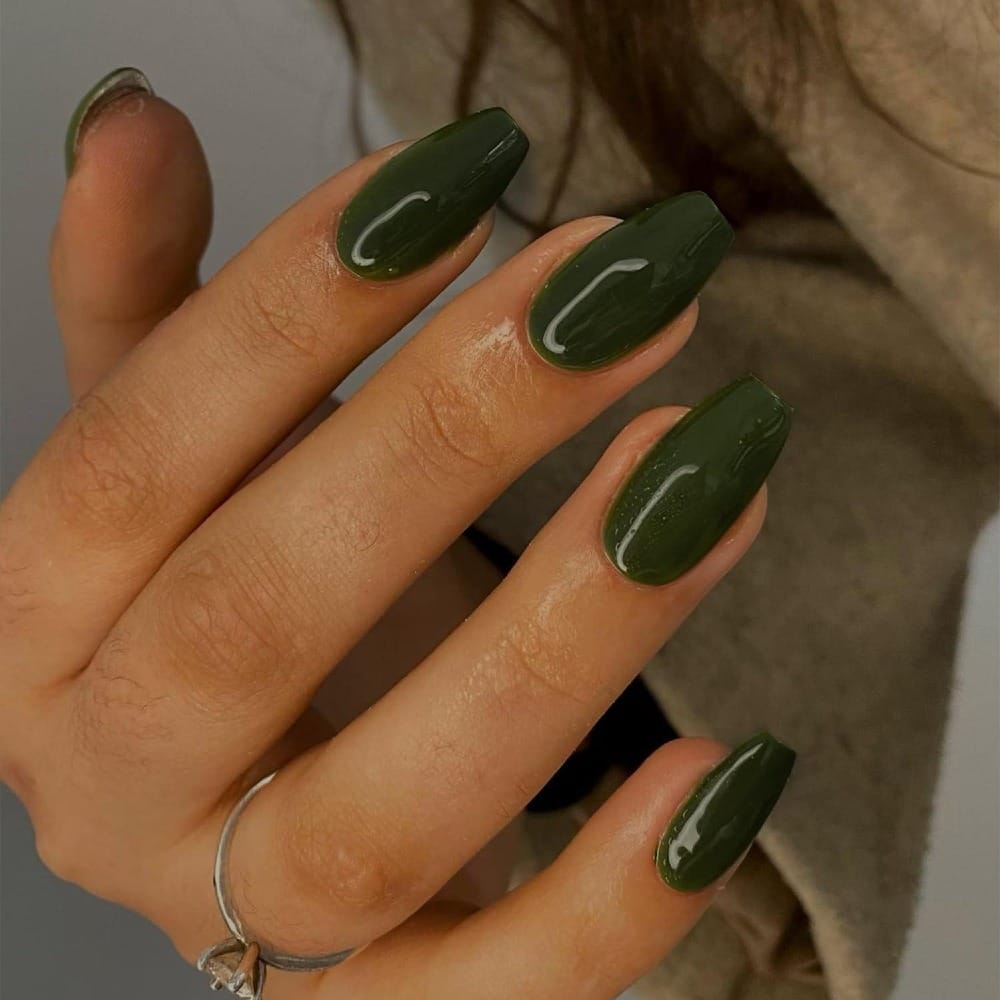
The coffin shape might not be suitable for everyone. Those with active lifestyles or jobs that involve manual labor might find shorter, more rounded shapes like oval or square nails more practical. These shapes offer beauty without the high maintenance requirements of longer, sharper shapes like the coffin or stiletto.
Celebrity Influence and Trends
Celebrity manicurists often champion coffin nails because they provide a large surface for creativity and embellishments. Celebrities like Kylie Jenner and Rihanna have popularized this shape, making it a frequent request at nail salons. Their endorsement shows that even high-impact shapes like coffin nails can be worn beautifully and durably with the right care.
Summary
Coffin nails combine beauty with a touch of edginess, making them a popular choice for those looking to make a statement with their nail art. While they can be more prone to breaking if not properly maintained, choosing the right materials and length and having regular upkeep can help mitigate these issues. Whether you opt for natural or acrylic, understanding the demands of the coffin shape is key to enjoying its benefits without frequent breaks.
FAQ Section
What are the best practices for preventing breaks in coffin nails?
To prevent breaks, opt for a moderate length, consider acrylic for added strength, and maintain regular care routines, including moisturizing and using nail hardeners for natural nails.
Can coffin nails be a practical choice for everyone?
While coffin nails are stylish, they might not be practical for everyone. Those with highly active lifestyles might benefit from choosing shorter and more rounded nail shapes like oval or squoval.
How often should I get touch-ups for acrylic coffin nails?
It would help if you visited a nail salon every 2-3 weeks for touch-ups to prevent lifting and cracking, which can lead to breaks.
